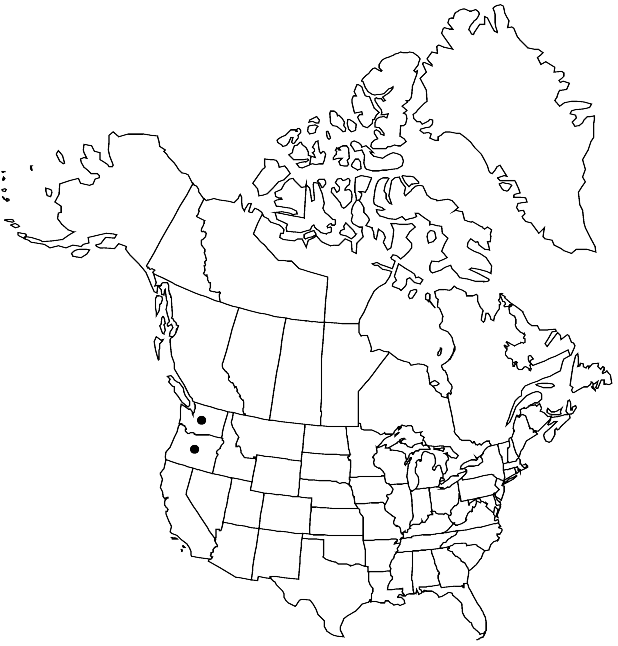Boechera paddoensis
Harvard Pap. Bot. 11: 268. 2007.
Perennials; long-lived; (cespitose); apomictic; caudex usually woody. Stems 1–3 per caudex branch, arising from center of rosette near ground surface, or arising laterally proximal to sterile shoots, 1–2.5 dm, glabrous throughout. Basal leaves: blade narrowly oblanceolate, 1–3(–6) mm wide, margins usually entire, rarely apically few-toothed, not ciliate, surfaces sparsely pubescent, trichomes short-stalked, 4–8-rayed, 0.08–0.2 mm. Cauline leaves: 4–8, not concealing stem; blade auricles 1–2 mm, surfaces of distalmost leaves glabrous. Racemes 5–12(–18)-flowered, usually unbranched. Fruiting pedicels usually divaricate-ascending, rarely horizontal, straight, 2–5(–10) mm, glabrous. Flowers ascending at anthesis; sepals glabrous; petals lavender to purple, 4–5.5 × 1–1.5 mm, glabrous; pollen spheroid. Fruits usually divaricate-ascending, rarely horizontal, not appressed to rachis, secund (often weakly so), straight, edges parallel, 3–5.5 cm × 1.5–2 mm; valves glabrous; ovules 42–54 per ovary; style 0.05–0.1 mm. Seeds uniseriate, 1.1–1.5 × 0.9–1.3 mm; wing continuous, 0.1–0.3 mm wide.
Phenology: Flowering Jul–Aug.
Habitat: Rocky ridges
Elevation: 1500-2100 m
Distribution

Oreg., Wash.
Discussion
Morphological evidence suggests that Boechera paddoensis is an apomictic species that arose through hybridization between B. lemmonii and B. lyallii (see M. D. Windham and I. A. Al-Shehbaz 2007 for detailed comparison). Boechera paddoensis is known only from the mountains of central Washington and northeastern Oregon.
Selected References
None.